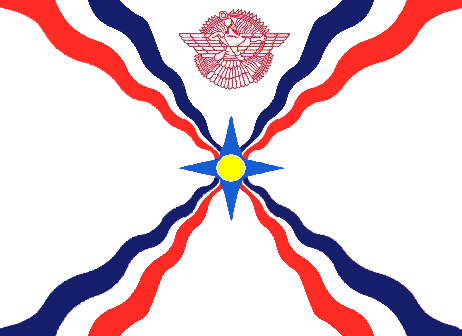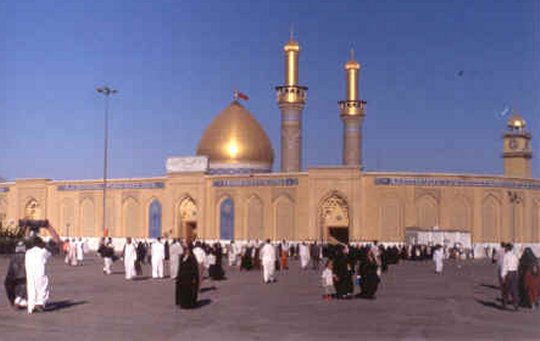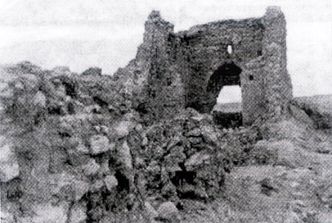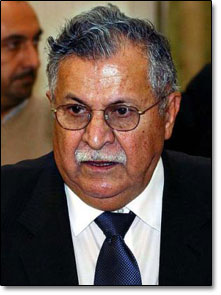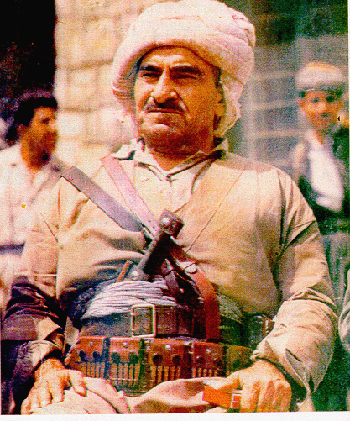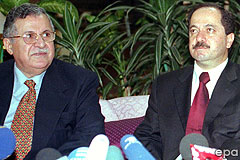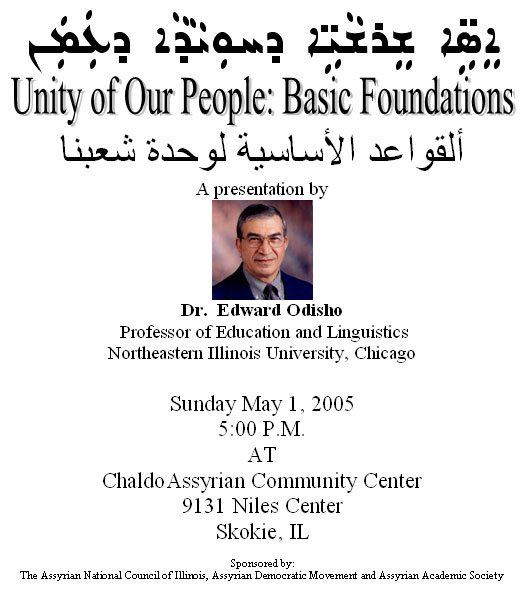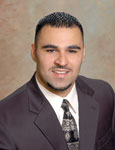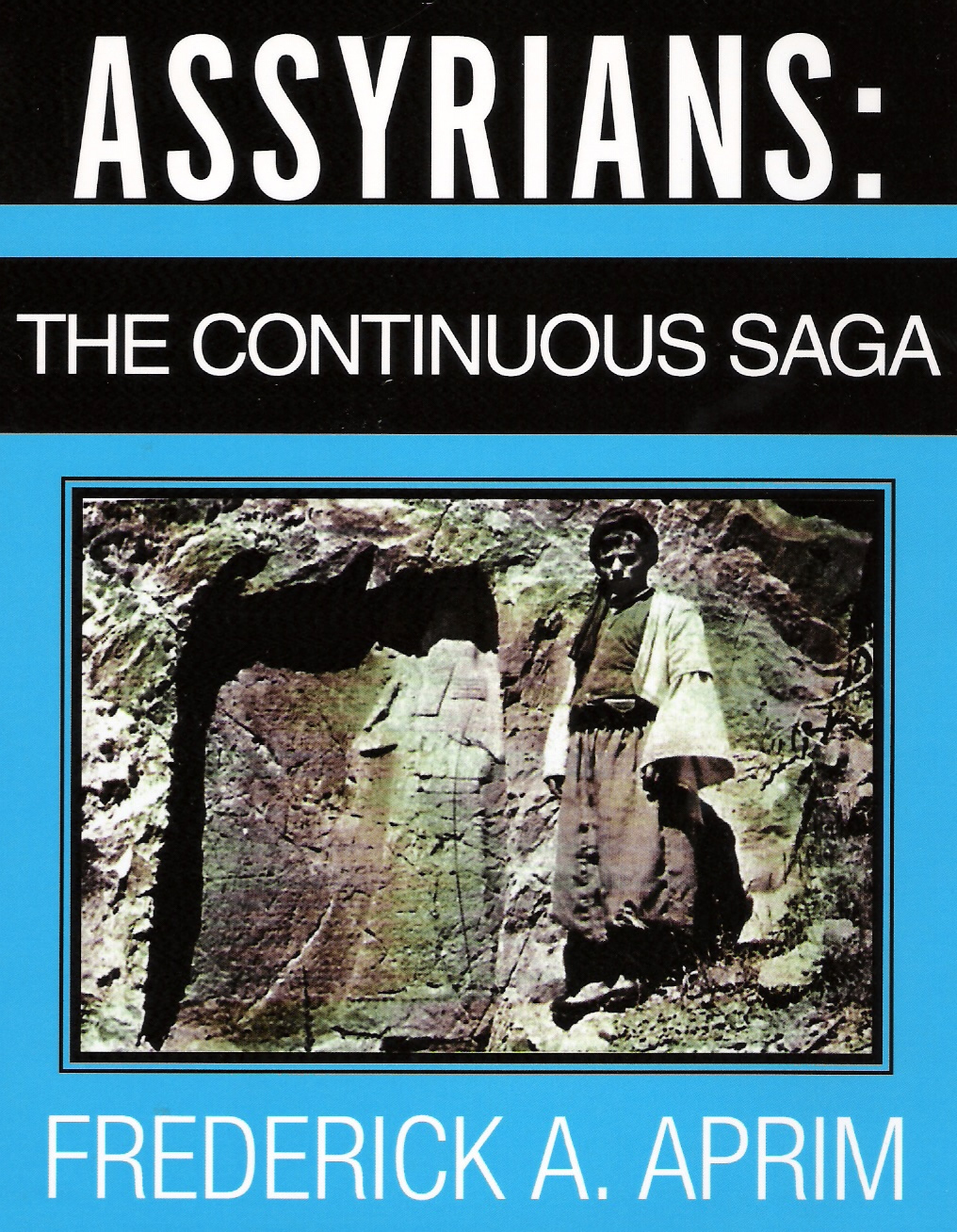Returning Exiles to Iraqi Politics
Ariel I. Ahram
Washington D.C.
Almost from the inception of the Iraqi state, exiles have tried to formulate alternatives to the currently ruling version of Iraqi nationalism. Beginning with the Ba'th party takeover in 1968, opposition groups increasingly found succor abroad, where they tried to articulate visions for Iraq's future that could transcend Iraq's crippling problems and divisions. After Saddam's fall, exiles have returned and tried to implement their views but they face considerable challenges, including resentment by those who never left Iraq. Deciding which exiles deserve a place within the new Iraqi nation will be a major step in solving the dilemmas of Iraq's contested national identity.
Ten months before he was found cowering underground in a farmhouse on the outskirts of Tikrit, President Saddam Hussein vowed that he would not seek asylum abroad in order to spare his country the onslaught of an American invasion. Saddam said that he would never leave Iraq and anyone "who decides to forsake his nation" by fleeing was a traitor to the principles of patriotism.[1]
Of course, the state and the daily activity of a society are foremost in defining its national life. Only in unique circumstances can those who have left exert significant political influence at home, and even more rarely are they able to gain power. Yet even when they lack the political power to form full-fledged shadow governments, exiles can develop a critique and counter-point to the dominant existing order.
Marion Farouk-Sluglett and Peter Sluglett, pre-eminent historians of Iraq, wrote in the wake of the 1990-1991 war that much of the earnest consideration of Iraq's modern history has been conducted by politically committed Iraqi intellectuals living in exile. Only in the pages of journals like al-Thaqafa al-Jadida, produced in Cyprus, and al-Nahj in Damascus, could serious "debates on the themes such as the role of the state, land reform, the Kurdish question, the Shi'i movement, or the convergence of new social classes" be undertaken.[2] After helping persuade and assist the United States in deposing Saddam, exiles have yet to solidify a place in the new Iraq. Their role in the post-Saddam situation depended at first on whether their American sponsors believed them useful and in the future on whether Iraqis who remained at home during the Saddam era perceive these returnees as loyal.[3]
The Centripetal State
The establishment of the Iraqi state in 1921 left Sunnis, Shi'as, Kurds and Turkmens on both sides of the border. The Kurds, for example, lived on territory that was divided between Turkey, Iraq, Iran, and Syria. The travails of the Kurds, who to this day remain wary of assuming an Iraqi identity and thus can only with great difficulty be considered an "Iraqi" exile group, will be discussed only in passing. But there were also Shi'i seminarians from the shrine cities who preferred living under the protection of their co-religionists in Iran than under the Sunni Hashemite monarchy, as well as Christians who had already begun to establish immigrant pockets in New York, Detroit, and elsewhere.
For the most part, the political life of these earliest diasporic groups had little relationship with the central government and scarcely a trace of "Iraqiness" at all. Still, they cannot be considered mere migrants who transplanted the centers of their cultural life to another land and relinquished their ties to the "old country." The Iraqi state, once formed, had a centripetal effect on all social groups. Even as the state persecuted, victimized, and even expelled communities in the name of its ideological commitments to unitary nationalism, these communities left vital components of their communal heritage, symbols, and institutions within Iraq; they had to negotiate ways to maintain their status as legitimate interest holders in Iraq as they lived outside its borders.
The first group to fall victim to the banner of Iraqi Arab nationalism was the Assyrians. From the beginning, the Assyrian position within the Iraqi borders was precarious. Having come to Iraq as refugees from Ottoman Turkish persecution during the First World War, the Assyrians were a non-indigenous Christian community, which the Iraqi state considered an unfortunate Ottoman and British legacy. Their collaboration and participation in the British-raised militia increased the popular view of the Assyrians as agents of imperialism. Finally, the Assyrians' demand to preserve their cultural patrimony and political autonomy under the leadership of the Mar Sham'un, head of the Assyrian church, ran directly contrary to the desire of the new Hashemite monarchy and nationalist politicians to reduce the power of traditional leaders and create a cohesive national identity.[4]
S O L D |
|
, Realtor600 E. Main St. #300
Turlock, CA 95380 |
|
| www.listwithtony.com |
|
The 1933 Iraqi army assault on the Assyrians, the exile of Mar Sham'un to London and eventually Chicago, and the subsequent mass migration to the West, set forth the dilemmas that all Iraqi exile communities eventually would face. First, they had to decide whether they would identify themselves as Iraqi at all. This would bolster their claim to a patrimony in Iraq and maintain their status as legitimate interest holders in the Iraqi state, but it would also tacitly accept the legitimacy of the state that had rejected and persecuted them. A second and inter-related problem was the question of integration and assimilation in their host countries, to what extent exiles could participate in and identify with their new homes without losing their distinctive identity and thereby their claim to their old homeland.
For their part, Assyrian exiles dramatically and emphatically rejected Iraqi-ness. Madawi al-Rashid, studying the Assyrian community in London, found that Assyrians referred to their homeland as Mesopotamia or Bayna Nahrayn ("land between two rivers"). Al-Rashid comments that:
Mesopotamia is distant in time from Iraq with its present political apparatus. In a sense, it is a negation of this apparatus as it exists today. A political entity in the form of an ancient Assyrian Empire was founded in Mesopotamia. Assyrians readily identify with this entity rather than with the present state of Iraq.[5]
Ironically, this emphasis on pre-Islamic history may have brought the Assyrians to admire Saddam Hussein's attempts to elaborate a "Mesopotamian" identity for Iraq.[6] Al-Rashid quotes from a curious article published in the Assyrian Observer (London) in 1991: "The new redevelopment in Iraq and the rise of the new Babylon, the ancient Assyrian city of science and astronomy in south Baghdad and the rebuild [sic] of the new Nineveh, the last capital city of the Assyrian Empire in north Mosul, under the direct jurisdiction of the President Saddam Hussein, are clear indication[s] of the rise of Assyria again…."[7] Whether this statement is part of an Assyrian chiliastic tendency, viewing the horrors of the first Gulf War (1990-91) as an apocalyptic foreshadowing, as al-Rashid argues, or an expression of approval for the Ba'th regime, remains a mystery.
Nevertheless, the center of Assyrian identity abroad has shifted somewhat from a territorial identity to a spiritual community. The Assyrians abroad, al-Rashid found, languish in estrangement from their homeland but are consoled by the continuity of the Patriarchy in Chicago, which is an "important element in the preservation of their identity," a symbol of unity.[8] The Church, both as an abstract institution and as a physical facility, provides an important meeting point for the Assyrian community and seems a strong basis for the perpetuation of the Assyrian ethno-religious identity.
Patriarch Mar Dinkha IV resides in Chicago but was ordained in Ealing, London in 1976. Contact between the American and British Assyrian communities is so close as to "divert" religious contact from Iraq, where another Patriarch is also installed.[9] By acceding to the Chicago Patriarch, though, members of the Assyrian diaspora cut off an important element of their connection to Iraqi/Mesopotamian soil. In essence, they sacrificed an element of their hope for return for the benefits of added social cohesion in their new homes.
The Jews were the second of the smaller minorities forced to flee Iraq. Unlike the Assyrians, the Jews were at first considered as being fully native to Iraq, forming an important part of the social fabric of many Iraqi urban centers. For example, according to some sources, in the 1920s Jews made up around half of Baghdad's population.[10] Still, like the Assyrians, the Jews were accused of collaborating with British imperialism and with the Zionists. The Jewish exodus from Iraq came in waves proportional to the level of persecution inflicted on the community. The 1941 pogrom known as the Farhud, which resulted in the death of over 100 Jews, led many Iraqi Jews for the first time to consider Zionism as offering a possible alternative home, and consequently, an alternative identity as well.[11] By 1951, all but 5,000-6,000 of the over 100,000 Iraqi Jews had requested exit permits. The government froze the assets and stripped away the citizenship of the departing Jews.[12]
Unlike the Assyrians, who maintained some institutional and communal presence in Iraq, the remaining Jewish institutions were much smaller, weaker, and subject to continual harassment. The Jewish attitude toward Iraqi-ness was also much more ambivalent. Jews had enjoyed a relatively high degree of success and integration in Iraqi society. Many of the older generation of community leaders, like Sassoon Kedourie, chief rabbi from 1933 to 1949 and from 1953 until his death in 1971, "walked a fine line in reassuring the Iraqi government that the Jews were loyal citizens." Detractors, especially among the younger generation, however, blamed Kedourie for being aloof and unresponsive to the needs of his community for greater protection.[13] Unlike the Assyrians, Iraqi Jews were actively courted by an alternative identity, namely Israeli nationalism, which urged Jews to jettison their attachments to exile and "return" and "ascend" to the Jewish nation. As of today, the Iraqi Jewish (in Hebrew sometimes referred to as Bavly, meaning Babylonian) identity in Israel (as well as amongst American Jewry) exists mainly as a sort of declining ethnic sub-cultural one, but not much more.[14] While neither the Assyrians nor the Jews are likely to play a considerable role in post-Saddam Iraq, the patterns of their exile experience remain pertinent to all subsequent exile groups.
The People vs. the State
It was not until the 1958 coup overthrowing the monarchy, followed by the Ba'th party's complete assumption of political control in 1968 that the allure of the centripetal state diminished and outright opposition to the state from the diaspora emerged. The Shi'a Muslims, the largest ethnic bloc in Iraq, blatantly defied the Ba'th government.
During the 1960s and 1970s, Iraqi Shi'a tried to articulate an alternative vision of Iraqi nationhood that ran entirely contrary to the Ba'th party's pan-Arab nationalism. The Shi'i ‘ulama had always been wary of the Sunni-dominated government in Baghdad but in the Ba'th they faced a group which ruthlessly pursued its totalitarian vision of a secular, Arab-oriented Iraq.
Under persecution, much of the Shi'i religious leadership sought refuge abroad. In the summer of 1969, the Ba'th began to deport Shi'a in large numbers. Then junior cleric Muhammad Baqir al-Sadr, closely associated with the leading Shi'a Islamist party, Hizb al-Dawa, escaped to Lebanon to coordinate international protests against the regime. A year later, Sadr returned and adopted a more conciliatory attitude. But by the early 1970s, tens of thousands of Iraqi Shi'a had been deported under suspicion of being an Iranian fifth column, even during the shah's era. In 1979, as the Iranian revolution was reaching its zenith, Sadr abandoned quietism and began to court publicly Ayatollah Ruhollah Khomeini, branding the Ba'th regime "bloody murderers" and agents of Christian imperialism, a reference to the Ba'th founding ideologue, the Greek Orthodox Michel Aflaq. Sadr recorded a message calling upon, "All the sons of Iraq, Arabs and Kurds, Sunnis and Shiites" to unite against "the ruling despots…[who] desecrate Islam, Ali and Umar [i.e., both Sunni and Shi'a versions] alike."[15] The Ba'th responded by brutally suppressing anyone ever affiliated with the Da'wa, executing Sadr, his sister, and several hundred others. [16]
Certainly, the Ba'th tried to incorporate Shi'a cultural elements, including the Shi'i "saints," into its version of Iraqi nationalism but, in practice, their commitments to pan-Arabism and to an extremely authoritarian system under the dominance of Sunnis from Tikrit precluded the integration of Iraqi Shi'a into the nationalist framework. The Shi'i opposition, as Amatzia Baram notes, tried to appeal to the entire, "Islamic Iraqi people" and draw Sunnis to their cause, but still lapsed into unmistakable "Shi'ite particularism, bordering on delegitimization" of their version of Islam.[17] Despite Sadr's substantial efforts, his disciples failed to carry forward his campaign to forge a new nationalist alliance in Iraq in opposition to the Ba'th.
With the start of the Iran-Iraq War in September 1980, the situation became even more dire. In 1982, Ayatollah Muhammad Baqir al-Hakim, a protégé of Sadr and scion of the prominent al-Hakim clan, founded the Supreme Assembly for Islamic Revolution in Iraq (SAIRI, Al-Majlis al-A'la lil Thawra Islamiyya fil‘Iraq) in Tehran. For the first time, Iraqi Shi'a openly sided with and fought alongside Iraq's arch-nemesis, Iran.
Of course, SAIRI argued that such steps were necessary and justified in order to rid the country of Saddam. Yet even under Ba'th oppression, the vast majority of Iraqis--including the Shi'a--rejected SAIRI's call. Iraqi Shi'a conscripts fought and many died facing their Iranian co-religionists. Certainly, fear of reprisal for deserters had a strong influence among the ranks, but at the same time, SAIRI's military wing, the Badr Brigade, was able to raise no more than 4,000 anti-Ba'th soldiers from among the Iraqi prisoners of war.[18] As Faleh A. Jabar writes:
[T]he collaboration with the Iranian war machine assumed an anti-national character…. Prioritizing religious identity over national allegiance, SAIRI and its allies could not reach out to their co-religionists in Iraq. Among the results of the eight-year Iraq-Iran war was the rise of popular Iraqi patriotism and its merger with etatiste nationalism. The development formed a relatively strong protective shield, which sheltered the Ba'th regime and alienated Islamist groups from the mainstream of popular sentiment…. [W]hile the Iraqi Shi'ite migrant masses used to prepare their luggage to return home in the aftermath of each and any Iranian assault on Iraq during 1982-88, during 1988-90 they carried their bags to Europe. In fact, the years 1988-90 witnessed a high and rapid exodus of [Iraqi] Shi'is, notably from Syria, seeking political asylum in Western Europe.[19]
In an effort to coerce al-Hakim to cease his anti-regime agitation, Saddam arrested, held hostage, and murdered dozens of his family members. The seminaries of shrine-cities were choked-off from the financial support of the international Shi'i community.[20] The price of the exiles' defiance was disaster for those who stayed at home.
Throughout the war, the disparate ideological visions of what Iraq was and what it should be, coupled with personal rivalries and the interference and cynical manipulation by host countries, proved debilitating for all attempts to forge a strong anti-Saddam exile coalition. The two major Kurdish groups, the Kurdish Democratic Party (KDP) and the Patriotic Union of Kurdistan (PUK), were often at odds with one another. Arab nationalist exile groups based in Damascus, like the Arab Socialist Movement and the pro-Syrian-wing of the Ba'th Party, refused to work with the Kurdish nationalists. The Iraqi Communist Party was able to ally with the Kurds, but not with the Arabs. SAIRI, relying on its safe haven in Iran, aligned with Kurdish Islamists, but did not work with the secular opposition.[21]
These differences continued to fracture the exile opposition through the first Gulf War (1990-91). After the ceasefire, Badr Brigade militias entered Basra, ‘Amara, and Kut and Kurdish peshmergas expelled government forces from the north. Six days into the revolt, on March 13, 1991, Iraqi opposition leaders in Beirut announced that they had established a joint leadership to intensify the struggle against Saddam and made provisions for a general elections and a new constitution. Just two weeks later, however, the unified front crumbled. The government repressed the rebels in the shrine cities of Karbala and Najaf and the elderly Grand Mujtahid, Abu al-Qasim al-Khoi, who had cautiously supported the rebellion, was kidnapped and forced to appear on television praising the regime. At the same time, Saddam nominated a new prime minister, a Shi'a from Karbala, as a gesture of his willingness to incorporate Shi'a into the highest political echelons (even as he purged Shi'a from the governorate, party, and military ranks).[22] For their part, the Kurds made a separate peace with Saddam to fulfill their aspiration of self-rule. By mid-April 1991, they had begun negotiations with Baghdad to gain autonomy in the Irbil and Sulaymaniya governorates alone.[23]
The seeds of anti-Shi'a-ism in Iraq, the accusation that the Shi'a who flocked to the banner of Iraqi Communist Party were shu'ubi--Persian-lovers or self-hating Arabs--began in the 1940s. Throughout the Iran-Iraq War and into the First Gulf War, the Ba'th used this idea. Saddam harped on the themes of loyalty and national fulfillment and spared no effort to punish those he claimed had abandoned the Iraqi camp.[24] The exiles did not muster an effective rebuttal. They themselves could not develop an alternative political community that transcended the serious ethnic, sectarian, and ideological cleavages inherent in Iraqi society. Indeed, as Baram observes, the behavior of the exiles and the underground movement in Iraq, their reliance on Iran and other countries and their sectarianism, "may have helped Saddam Husayn to convince the Iraqi public, or those who were undecided, that Iraq was indeed faced with the danger of splitting into three ‘statelets' (dawaylat)."[25] In short, Saddam was even better able to project the vision that without his version of Iraqi nationalism (al-wataniyya) and Arab nationalism (al-qawmiyya), the country would fall apart.
Reintegration
It was not until after the crushing defeat of the March insurrection inflicted yet further damage on Iraq, imposed harsh sanctions, and severed the Kurdish region from the whole of Iraq that new visions for Iraq began to materialize from exile. The beginnings of this vision emerged from the 1992 Vienna and Salahuddin meetings of the major Iraqi opposition groups. The meetings were convened by the newly founded, U.S.-backed Iraqi National Congress (INC). For the first time, the KDP, PUK, Da'wa, SAIRI, and leading nationalists like Iyad Allawi's Iraqi National Accord and the Constitutional Monarchy Movement, agreed that federalism was the only way to maintain Iraqi unity and still provide for the national aspirations that the Kurds had struggled so long to fulfill. An explicit (if still hypothetical) bargain was struck over just what it meant to belong to Iraq.
|
Assyrian Continuity from Fall of Nineveh to Modern Times / 309 pages
Hard Cover $30
Paperback (Soft Cover) $20
Price includes shipping and handling.
Send money orders (preferred)
or personal checks to:
Fred Aprim
P.O. Box 446
Hayward, CA. 94543 USA
|
This was an impressive step for the INC and its founder, Ahmad Chalabi, a Western-trained mathematician and banker who had fled Iraq in 1959 after the coup that overthrew the monarchy. A secular Shi'a, Chalabi hoped that by presenting a unified, secular-oriented front among the exile groups and developing an alternative leadership structure, he could overcome the U.S. reticence to overthrow Saddam's regime. But mitigating against these high hopes, all of the groups that met under the INC umbrella retained their prerogative to operate independently. Several groups refused even to participate in the conference, including the Iraqi Communist Party and the Iraqi Islamic Party, the political wing of the Iraqi Muslim Brotherhood--both prominent political parties in Iraq during the 1950s and 1960s.[26]
The first Gulf War and its aftermath also brought a crisis of identity for Iraqi exile intellectuals. In his book Cruelty and Silence (1992), Kanan Makiya took to task Arab intellectuals, including the prominent Iraqi exile poet Abd al-Wahhab al-Bayati, for being eager to render Saddam an Arab champion against the West while tolerating Saddam's heinous crimes against his own people.[27] Makiya became a leading proponent of regime change, but other exiles accused him of being "an apologist for the new Rome," the United States, and ignoring the Iraqis who abhorred Saddam but opposed an American invasion.[28]
The 1990s inaugurated a new drive toward ethno-sectarian ecumenism among diaspora intellectuals. In April 1991, just after the suppression of the uprising, Aziz al-Samawi, an exiled poet famous for composing in the Arabic dialect of his native Diwaniya, memorialized Saddam's poison gas attack on the Kurdish village of Halabja. The attack was a crucial moment in the Kurdish cultural memory but one which had been ignored in Arab circles.[29]
Diaspora cultural life surpassed the indigenous Iraqi work in creativity and breadth. Anthologies published abroad, both in Arabic and western languages, expressly sought to reintegrate Arab, Kurdish, Christian, and Jewish writers into the Iraqi cultural sphere. Even the Ba'th could not ignore the role of the diaspora in shaping Iraqi intellectual life, with Buland al-Haidary, Lami'a Abbas Imara, and S'adi Yusuf and other poets appearing in official government publications (without, of course, mentioning their having left the country).[30] .
Changes in the religious landscape of exile also occurred. Whereas previous waves of religiously-oriented Iraqi Shi'a came to Tehran and were radicalized by the Islamic revolution, Abd al-Majid al-Khoi relocated to London in 1994 after his older brother, an increasingly prominent ayatollah, was assassinated in Najaf.[31] By that time there were four Iraqi Shi'a community centers, one educational center, and branches of five major political groups, including Da'wa, SCIRI, and the Islamic Action Organization, serving the 60-80,000-person Iraqi community in London. Abd al-Majid devoted himself to running the Al-Khoi Foundation (Mu'assasat al-Imam al-Kho'i al-Khairiyya), which administered the family's charitable, educational and religious networks world-wide and advocated a new strain in Iraqi Shi'a thinking, one devoted to "a liberal society with a pluralist political system."[32]
The 1990s saw a new coherence in the Iraqi diaspora community. Both in the cultural and political sphere, the Iraqi diaspora demonstrated unprecedented levels of inclusions and indeed, a turn toward liberalism.[33] The distance grew between members of the diaspora, who increasingly found comfort in the Western political and social climate, and Iraqis in the homeland, stricken by sanctions and beset by Saddam's heavy hand. However, neither side could ignore the other. One could not sit in Baghdad discussing Iraq's cultural heritage without mentioning the now multitude of artists who were working abroad; neither could one debate territorial versus ethnic federalist systems in London without considering how such a scheme would be received by the millions of Iraqis suffering in the homeland.
After Homecoming
Many of the plans laid and bargains brokered in exile for a reinterpretation of the Iraqi national identity seemed mere abstractions once Baghdad fell in April 2003. Those who had remained in Iraq during the Saddam era resented the presumption of the exiles to rule. Abd al-Majid al-Khoi was assassinated in Najaf less then a week after his return to Iraq by forces loyal to the young radical cleric Muqtada al-Sadr. Muqtada asserted that "religious people who went into exile should not have left. The country needed them,"[34] and that only those who had persevered under the Ba'th had the legitimacy to lead the masses. Others, like Muhammad Baqir al-Hakim, killed by a car-bomb during Friday prayers in Najaf in August 2003, fell victim to an anti-American insurgency seeking to spark sectarian civil war. The exiles' American sponsors, too, came to doubt the exile's ability to garner trust, loyalty, and support within Iraq. Chalabi, once considered a favorite of the U.S. government, was dismissed in disgrace amidst accusations of fraud, misinformation, and betraying American military secrets, allegations perhaps generated due to the bureaucratic infighting in Washington.
 |
Of the twenty-five members of the interim Iraqi Governing Council (IGC), the U.S.-appointed body charged with navigating the return to sovereignty, ten were leaders of exiled movements, including Ibrahim al-Ja'afari of Da'wa and Abd al-Aziz al-Hakim of SAIRI. Others on the council, like Muwafiq al-Rubaiee, had developed liberal and independent political orientations in exile. The Iraqi Islamic party, which had resumed its underground activities in Iraq after 1991, nominated Muhsin Abd al-Hamid, a Baghdad University professor who had been imprisoned by Saddam and had never been in exile, as its delegate.[35 The attitude of some of the members toward this body, however, was ambivalent. Abd al-Hamid said almost ruefully, "We did not [bring about] the occupation and did not consent to it, but our entry to the Governing Council was a necessity to fill the void and defend the rights of the Iraqi people….We do not participate as sectarians, but…there are Shi'a and Sunnis, and it was necessary to truly represent the Sunni people, making obligatory this entry [into the Council]."[36]
The IGC proved a forum for the reappearance of many of the divisions which had hampered the exiles during the Saddam era. During the drafting of the Transitional Administrative Law in February and March 2004, the Kurds appeared less wedded to the idea of remaining within Iraq and the Shi'a, responding to the demands by the Grand Mujtahid Ali Sistani not to allow Iraq to be divided, appeared close to reneging on their promise to provide the Kurds real autonomy. Even Chalabi joined the other Shi'a in holding out until the last minute before acceding to the Kurdish demand. This was the worst crisis in the relationship between the two key constituencies of the exiled anti-Saddam front since 1992. Faced with the possibility of exercising real power in Iraq, ideological and personal rivalries reemerged.
The make-up of the transitional government, sanctioned by the US, the UN, and Ayatollah Sistani, continued to highlight the importance of exiles in Iraqis future. The two top officials in this government, Prime Minister Iyad Allawi and President Ghazi al-Yawir, had both been in exile. As ceremonial head of state in a period of inchoate legitimacy and societal chaos, Yawir has a position that is particularly crucial. The Sunni scion of a prominent mixed Sunni-Shi'i tribe, Yawir took pains to show that he is above ethnicity, stating, "my tribe is Iraq and the sons of my tribes are the Iraqis."[37]
The return of the exiles to Iraq introduced a new cleavage into an already heterogeneous national polity, between those who had spent time in the diaspora and harbored intentions to alter radically concepts of Iraqi citizenship and those who felt their endurance in the homeland during the periods of dictatorship, war, and sanctions, proved their greater allegiance to the nation. Not surprisingly, exile leaders led the effort to readmit those who had lost their citizenship rights. Article 11 of the Transitional Administrative Law specifically annulled the Ba'th Regional Command Council's 1980 Decision Number 666 that stripped the citizenship of those considered to be of Iranian origin. The article goes on to say that "any Iraqi whose Iraqi citizenship was withdrawn for political, religious, racial, or sectarian reasons has the right to reclaim his Iraqi citizenship" and that dual citizenship was permissible.[38]
Those who rejected the legitimacy of the new government also question the loyalty of exiles and their claim to a place in the new Iraq. Much of this resistance comes from Sunni Arab groups who remain suspicious of Shi'a claims to be fully Iraqi, considering their connection to Iran. The United Patriotic Movement, one of the first Sunni groups to emerge in opposition to the occupation, proposed that the presidency of the Iraqi republic be limited not only to citizens of Iraq, but also to those who could prove that both their parents were citizens. Such a clause would have maintained the discrimination against those considered of Persian lineage encoded in Article 66 of the Ba'th Party's 1968 Interim Constitution. Additionally, it could potentially continue the disenfranchisement of those who the Ba'th had stripped of citizenship in the 1960s.[39] The Muslim Ulama Council, another leading Sunni opposition movement, echoed this sentiment in an open letter to UN envoy Lakhdar Brahimi on the obstacles to implementing elections. They complained of the entry of hundreds of thousands of individuals into the country, "all the riff-raff" [kul min hub wa' dub] from the neighboring countries who claim that they were banished by the former regime."[40]
Clearly, there are strong political motivations for Sunnis especially to be wary of any attempt to reincorporate exiles--many of whom are Shi'a and Kurds who were pushed the periphery by the Ba'th's concept of nationalism--into the polity. This suspicion was not limited to the Sunnis, however. As a spokesman for Muqtada al-Sadr complained of the exile parties, they "represent foreign interests. They do not represent the Iraqi people." Another Shi'i sheikh, Faith Kashif Ghitta, who had spent five years in Saddam's prison, said that "the exile parties are going to eat the entire cake. Their parties got what they wanted--they got to control the Governing Council, the national conference, and they're going to control the new parliament."[41]
This new cleavage has increased in salience as the country prepared for January 31, 2005 elections to the constitutional assembly. Grand Ayatollah Sistani and Kurdish leaders demanded that the two to four million Iraqi expatriates be allowed to vote from abroad. A representative of the Da'wa warned that without expatriate voting, "the Shi'a might withdraw completely. That's a serious threat. We said, ‘If you don't include those votes, you're pushing us to the red line.'" Again, this stance mixed pragmatic political consideration and ideological convictions. Allowing diaspora members to be counted at the polls would certainly add to the electoral strength of the Shi'a and Kurds, but it is also part of an effort to deny Saddam the ability to determine the boundaries of the Iraqi polity. In contrast, Sunnis complain that this policy on diaspora voting would further dilute their electoral power. Some pointed out that it would allow the earliest Iraqi exiles--Assyrians and Jews, who adopted Israeli, British, or other citizenship--to exercise electoral power in the new Iraq. Such a step would have been anathema to many Iraqis, in the diaspora and in the homeland alike, who consider the best hope for their nation to be based on an Arab-Islamic identity.[42]
Ultimately, the Iraqi electoral commission acceded to Sistani's demands and contracted with an international non-governmental organization to set up registration and polling stations in the Australia, Canada, Denmark, France, Germany, Iran, Jordan, Sweden, Syria, Turkey, the United Arab Emirates, the United Kingdom, and the U.S. Still, there was recognition that limited number of polling stations were insufficient to permit every Iraqi living abroad who met the criteria set by the commission--being eighteen years of age and having proof that you or your father had once been an Iraqi citizen--to vote.[43]
Iraq Out of the Country Voting Results
Country |
Estimated Eligible Votes |
Total Valid Votes Cast |
Percentage of Eligible Votes Who Voted |
Top Three Lists |
| Syria |
500,000 |
14,922 |
2.98% |
Iraqi List [Allawi] (34%), UIA (31%), Nationalist Mesopotamian (10%) |
| Jordan |
360,000 |
21,160 |
5.88% |
UIA (45%), the Iraqi List (31%), Nationalists of Mesopotamia (3%) |
| US |
313,000 |
24,278 |
7.76% |
UIA (32%), Nationalist Mesopotamian (29%), Combined Kurdish List (17%) |
| UK |
250,000 |
28,569 |
11.43% |
Combined Kurdish List (62%), UIA (19%), Iraqi List (5%) |
| Iran |
134,137 |
56,069 |
41.80% |
UIA (69%), Combined Kurdish List (12%), Islamic Union of Iraqi Fayli Kurds (5%) |
| UAE |
100,000 |
11,349 |
11.35% |
UIA (48%), Iraq List (25%), Our Iraq (4%) |
| Sweden |
916,000 |
29,211 |
3.19% |
Combined Kurdish List (54%), UIA (19%), Popular Union (8%) |
| Germany |
75,000 |
25,127 |
33.50% |
Combined Kurdish List (70%), UIA (13%), Iraqi List (3%) |
| Australia |
75,000 |
11,145 |
14.86% |
Nationalist Mesopotamian (36%), UIA (30%), Combined Kurdish List (9%) |
| Netherlands |
44,000 |
14,134 |
32.12% |
Combined Kurdish List (59%), UIA (21%), Popular Union (6%) |
| Turkey |
40,000 |
4,030 |
10.08% |
Turkoman Front (85%), Iraqi List (2%), Combined Kurdish List (1%) |
| Canada |
36,000 |
10,453 |
29.04% |
UIA (30%), Nationalist Mesopotamian (23%), Combined Kurdish List (16%) |
| Denmark |
26,000 |
12,269 |
47.19% |
UIA (43%), Combined Kurdish List (29%), Popular Union (12%) |
| France |
8,000 |
969 |
12.11% |
Combined Kurdish List (43%), UIA (16%), Popular Union (13%) |
| TOTAL |
2,877,137 |
263,685 |
9.16% |
UIA (36%), Combined Kurdish List (30%), Iraqi List (9%) |
Levels of participation differed widely from country to country, but world-wide less than nine percent of the eligible voters cast ballots. In Germany, Sweden, Denmark, Canada, and the Netherlands, expatriate Kurds and Shi'a turned out in large numbers to support the combined KDP-PUK list and Ayatollah Sistani's Unified Iraqi Alliance (UIA) list, respectively. Not surprisingly, Iraqis living in Iran also strongly supported the UIA. However, turnout rates were considerably lower in France, Australia, Britain, and the U.S., with only around one in ten eligible Iraqis participating. Only a handful of Israelis of Iraqi origin traveled to Amman to cast ballots, more out of a sense of nostalgia and ethnic pride than a hope to affect the electoral outcome.[44] Turnout among the Assyrians was higher, with the Nationalist Mesopotamian list taking seven percent of the total out of country vote. Perhaps most troubling was the extremely low level of turnout by the large Sunni expatriate communities in Jordan, Syria, and the UAE. Despite the Jordanian monarchy's urging of Iraqi expatriates to participate in the election in order to legitimate the new government, many in the diaspora bowed to the demands of prominent organizations in the homeland, like the Muslim Ulama Council, to boycott any election conducted under the shadow of occupation.[45]
Conclusion
The challenge to Iraqi exiles in many ways has mirrored that of Iraqi nationalism. Just as all Iraqi leaders, from King Faisal I to Saddam and now to Iyad Allawi, had to mobilize support from relatively broad sectors of Iraqi society, exiles, too, struggled to formulate a version of Iraqi nationalism that transcended class and especially ethnic cleavages. The exile experience opened avenues to cultivate such alternatives--some based on class, some on Islam, some on liberalism, some on balancing the ethnic identities which were presumed to doom any attempts to build a sense of "Iraq." However, the same phenomenon also increased the difficult of having these visions accepted in the homeland. The current conflict in Iraq continues along many dimensions, but the struggle between those who nurtured visions of Iraqi community in exile and those who see such attempts as interloping is crucial.
Notes:
[1] Saddam Hussein's interview with Dan Rather, February 26, 2003, http://www.cbsnews.com/stories/2003/02/26/60II/main542151.shtml.
[2] Marion Farouk-Sluglett and Peter Sluglett, "The Historiography of Modern Iraq," American Historical Review, Vol. 96 (1991), p. 1400.
[3] Yossi Shain and Ariel I. Ahram, "The Frontiers of Loyalty: Do They Really Change?" Orbis, Vol. 47, No. 4 (Fall 2003); Yossi Shain, The Frontier of Loyalty: Political Exiles in the Age of the Nation-State (Ann Arbor: University of Michigan Press, 2004).
[4] Liora Lukitz, Iraq: The Search for National Identity (London: Frank Cass, 1995), pp. 22-33.
[5] Madawi al-Rasheed, Iraqi Assyrians in London: The Construction of Ethnicity (Lewiston, New York: Edwin Mellen Press, 1998), pp. 112-3.
[6] Amatzia Baram, Culture, History, and Ideology in the Formation of Ba'thist Iraq, 1968-89 (New York: St. Martin's Press, 1991).
[7] cited Al-Rasheed, Iraqi Assyrians, p. 146.
[8] Al-Rasheed, Iraqi Assyrians, pp.115-6.
[9] Al-Rasheed, Iraqi Assyrians, pp. 185-6.
[10] Nissim Rejwan, The Jews of Iraq: 3,000 Years of History and Culture (Boulder: Westview, 1985), pp. 210-6.
[11] Nissim Rejwan, The Jews of Iraq, p. 227.
[12] Nissim Rejwan, The Jews of Iraq, pp. 247-8.
[13] Reeva Spector Simon, "Iraq," in R. Simon, M. Laskier, and S. Reguer (eds.) The Jews of the Middle East and North Africa (New York: Columbia University Press, 2003), p. 357.
[14] Arnold Lewis, "Phantom Ethnicity: 'Oriental Jews' in Israeli Society," in Alex Weingord (ed), Studies in Israeli Ethnicity: After the Ingathering (New York: Gordon and Breach Science Publishers, 1985), p. 144.
[15] Cited in Baram, "The Radical Shi'i Movement of Iraq," p. 143.
[16] Amatzia Baram, "The Radical Shi'i Movement of Iraq," in David Menashri (ed.), The Iranian Revolution and the Muslim World (Boulder, CO: Westview Press, 1990), pp. 141-145; and David McDowall, A Modern History of the Kurds (New York: I.B. Tauris, 1997), p. 330.
[17] Amatzia Baram, "Two Roads to Revolutionary Shi'ite Fundamentalism in Iraq," in Martin E. Marty and R. Scott Appleby (eds.), Accounting for Fundamentalisms: The Dynamic Character of Movements (Chicago: University of Chicago, 1994), p. 566.
[18] Faleh A. Jabar, The Shi'ite Movement in Iraq (London: Saqi, 2003), pp. 235-8, 253-4; Baram, "Two Roads to Revolutionary Shi'ite Fundamentalism in Iraq," p. 549.
[19] Jabar, The Shi'ite Movment, pp. 254-5.
[20] Juan Cole, "The United States and Shi'ite Religious Factions in Iraq," Middle East Journal, Vol. 57, No. 4 (2003), p. 550.
[21] Robert G. Rabil, "The Iraqi Opposition's Evolution: From Conflict to Unity?," Middle East Review of International Affairs, Vol. 6, No. 4 (2002), http://meria.idc.ac.il/journal/2002/issue4/jv6n4a1.html.
[22] Yitzhak Nakash, The Shi'is of Iraq (Princeton: Princeton Univerity Press, 1994), pp. 275-8
[23] Michael G. Gunter, The Kurds of Iraq: Tragedy and Hope (St. Martins: New York, 1992), pp. 59-61; Helana Cook, The Safe Haven in Northern Iraq (Human Rights Center: University of Essex, 1995), p. 30.
[24] Yitzhak Nakash, "The Struggle for Iraq," Dissent (Summer 2003).
[25] Baram, "The Radical Shi'i Movement of Iraq," p. 147.
[26] Rabil, "The Iraqi Opposition," n.p.; Uriel Dann, Iraq Under Qassem: A Political History, 1958-1963 (London: Pall Mall, 1969).
[27] Kanan Makiya, Cruelty and Silence: War, Tyranny, Uprising, and the Arab World (New York: W.W. Norton, 1993), pp. 253-6.
[28] Sinan Antoon, "Dissident or Apologist?," The Nation (February 3, 2003).
[29] Salih J. Altoma, "Iraqi Poets in Western Exile," World Literature Today, Vol. 77, No. 3 (2003); "Mountain of Dreams" in Daniel Weissort (ed.) Iraqi Poetry Today (ed.) (King's College: London, 2003); Alex Bellem, "The Blind River: Self and Anxiety in Aziz al-Samawi's Poetry," Arab Studies Quarterly, Vol. 19, No. 4 (1997).
[30] Mahmoud Saeed, "A Legacy of Ruins: Iraqi Letters and Intellectuals Under Saddam's Regime," Al-Jadid, Vol. 9, Nos. 42/43 (2003), http://www.aljadid.com/features/0941saeed.html. See also Daniel Weissbort and Saadi A. Simawe (eds.) Iraqi Poetry Today (King's College: London, 2003), and the two volume anthology Mir Basri (ed.), A'lam al-Adab fi'l 'Arak al-Hadith [The World of Literature in Modern Iraq] (London: Dar al-Hikma, 1994). Compare these to Yaseen Taha Hafis (ed.), Modern Iraqi Poetry (Baghdad: Dar al-Ma'mum, 1989).
[31] Cole, "Shi'ite Religious Factions in Iraq," p. 549.
[32] Jens-Uwe Rahe, "Iraqi Shi'is in Exile in London," in Faleh A. Jabar (ed.), Ayatollahs, Sufis, and Ideologues: State, Religion, and Social Movements in Iraq (London: Saqi, 2002), p. 214.
[33] Basil Al-Naqib, Mujas al-barnamaj al-libralili li'-'arak al'mustaqbal [Outline of the Liberal Program for the Future of Iraq] (London: Dar al-Hikma, 1995).
[34] Quoted in Cole, "Shi'ite Religious Factions in Iraq," 557.
[35] See the BBC News, "Iraqi Governing Council Members," http://news.bbc.co.uk/2/hi/middle_east/3062897.stm.
[36] "Interview with Dr. Muhsin Abd al-Hamid," Al-Mujtama'a (Kuwait), February 14, 2004.
[37] Al-Hayat (Internet Version) in Arabic, June 3, 2004. This interview was given jointly to Al-Hayat and Al-Mada.
[38] "Iraq's Transitional Administrative Law," Washington Post, March 8, 2004.
[39] A.D. Ahmad 'Ubayd al-Kubaysi, Al-Haraka al-Wataniyya al-Muwahhada, Nida Raqm 1 (no place, no date). For a detailed description, see Amatzia Baram, Mosque-State Relations in Iraq (Washington DC: United State Institute of Peace, forthcoming).
[40] For a text of the letter, see Al-Mujtama'a (Kuwait), February 6, 2004.
[41] Mohammad Bazzi, "Feuding Interests of National Conference," Newsday (New York), August 1, 2004.
[42] Edward Wong, "Iraqi Officials to Allow Vote by Expatriots," New York Times, November 5, 2004; Al-Sharq Al-Awsat (London), April 1, 2004.
[43] Conference on Iraqi Out of Country Voting Program, Washington DC, January 11, 2005. Iraq Out of Country Voting Program, http://www.iraqocv.org.
[44] Shachar Smooha, "How I touched base with my roots and helped bring democracy to the Middle East," Ha'aretz Magazine [English Edition], February 6, 2005.http://www.haaretz.co.il/hasen/pages/ShArtVty.jhtml?sw=iraq&itemNo=536265.
[45] Az-Zamman (London), February 1, 2005.
 Zinda: Ariel I. Ahram is a doctoral candidate in the departments of government and Arab studies at Georgetown University. He wishes to thank Osama Abi-Mershed, Amatzia Baram, and Yossi Shain for their assistance with this paper. This article is reprinted from Middle East Review of International Affairs (MERIA) Journal [Volume 9, Number 1, March, 2005]. Copyright MERIA. For a free subscription to MERIA, write gloria@idc.ac.il. To see all MERIA publications, click here. To see the work of MERIA's publisher, the Global Research in International Affairs (GLORIA) Center, click here. Special thanks to Keren Ribo at the GLORIA Center. Zinda: Ariel I. Ahram is a doctoral candidate in the departments of government and Arab studies at Georgetown University. He wishes to thank Osama Abi-Mershed, Amatzia Baram, and Yossi Shain for their assistance with this paper. This article is reprinted from Middle East Review of International Affairs (MERIA) Journal [Volume 9, Number 1, March, 2005]. Copyright MERIA. For a free subscription to MERIA, write gloria@idc.ac.il. To see all MERIA publications, click here. To see the work of MERIA's publisher, the Global Research in International Affairs (GLORIA) Center, click here. Special thanks to Keren Ribo at the GLORIA Center.
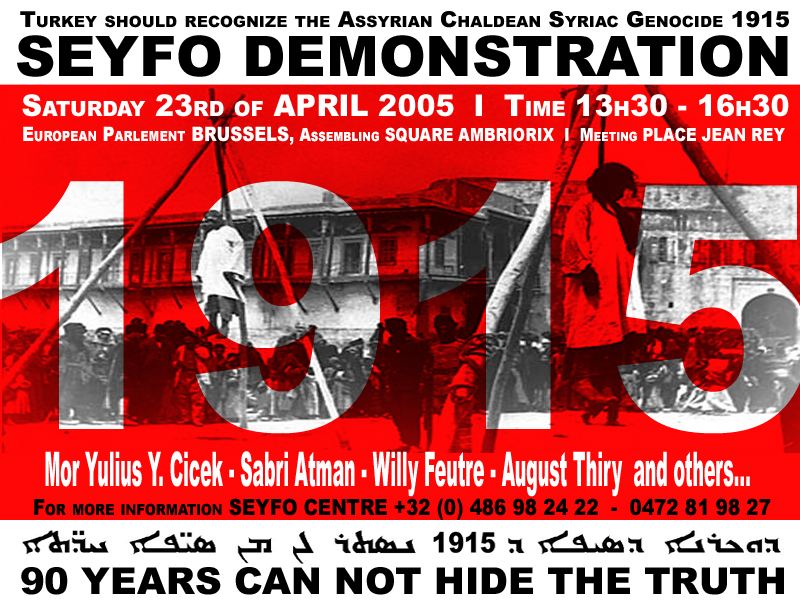
|


